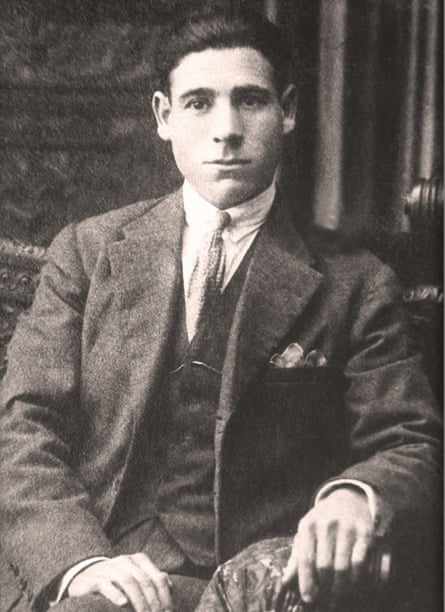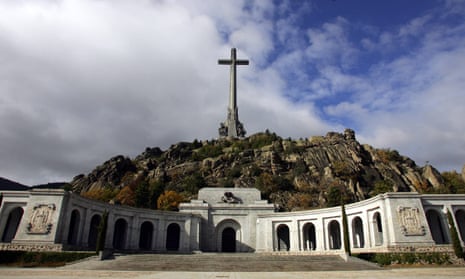A team of structural engineers will enter Spain’s most controversial monument on Monday to search for the remains of four of the 34,000 civil war dead who have lain next to the body of Francisco Franco for more than half a century, unnamed but not forgotten.
The basilica of the Valley of the Fallen, a hulking mausoleum 40 miles outside Madrid, is ostensibly dedicated to the memory of all those killed on both sides between 1936 and 1939.
Only two graves are marked, however, those of Franco and José Antonio Primo de Rivera, the founder of the Falangist party.
Around them lie the bodies of tens of thousands of people, both republicans and nationalists, which were disinterred from resting places across Spain and buried anonymously in the church in an apparent attempt at reconciliation.
Efforts to reclaim the remains came to nothing until 2016, when a court finally approved the exhumation of two brothers executed by Francoist forces in the early days of the war.
The bodies of Manuel Lapeña, a vet, and his brother Antonio, a blacksmith, were dumped in a mass grave in Calatayud, north-eastern Spain and then dug up decades later and reburied in the basilica without their families’ knowledge or permission.

The Benedictine abbot who presides over the Valley of the Fallen has repeatedly opposed efforts to exhume the dead, arguing that the site’s religious status must come before its political significance, but Spain’s national heritage authority has backed the court ruling and ordered the experts to begin work.
Lapeña’s granddaughter, Purificación, has spent eight years fighting to find and reclaim his and Antonio’s remains. After the many setbacks and disappointments she and her family have endured, she is trying not to get her hopes up.
“Given the amount of time we’ve been working on this, we’re not overly confident it will go ahead, but it should be an important moment,” she said. “If we find them, we’ll do what my father says, which is take my grandfather to the cemetery in his village, Villarroya de la Sierra. My cousins will decide what they want to do with my great-uncle’s body.”
Were it not for her family duty, she said, she would never have set foot in the valley, which is dominated by a 150-metre-high cross. “It’s a place that makes you hair stand on end.”
Like her father, however, she wants the brothers back where they belong.
“Everyone has dead relatives and you want them to be in a dignified place, or at least in the place where they would have wanted to be,” she said. “But above and beyond the fact they were murdered, their remains were taken and placed next to those of Franco, who was the biggest killer, and José Antonio [Primo de Rivera].”
Also waiting for news are the families of Pedro Gil and Juan González Moreno, who died fighting for Franco and whose bodies were reburied in the valley. “The fact that they’ve recognised our right to exhumation and that the technical part is in place is a huge step,” said Gil’s grandson, Héctor.

“They’re opening up the doors and there’s a real possibility of being able to exhume him, which is something that just hadn’t happened until now.
Like Purificación Lapeña, Héctor and his cousin Rosa scorn the suggestion that the basilica should be seen as an apolitical monument to the 500,000 people killed in the civil war.
“The Valley of the Fallen was built during a dictatorship. It was the work of a dictator and was dedicated to his own glory,” said Héctor.
“It was an attempt by El Caudillo to create a symbol of peace and reconciliation but, as in our case and in the majority of cases, families weren’t asked for their permission to have their relatives’ remains to be dug up and taken there. There was never any will from the families: it’s nothing more than the egocentric symbol of a dictator that uses the dead of both sides.”
Purificación Lapeña wants to see the bodies in the basilica, and those of the 100,000 civil war dead still lying in mass graves across Spain, identified and returned to their families. She also wants the immense cross to come down and for the basilica to be deconsecrated and turned into an educational centre.
“The Benedictines should take the church somewhere else. There are lots of places in Spain that would take them in,” she said. “And the remains of Franco and José Antonio should be given to their families so they can decide where they want them buried.”
Rosa Gil hopes that the coming days will bring her 82-year-old father a degree of closure. He was one year old when his father died of a bullet wound at the age of 27.
“Our grandfather was from a little village in Soria and we’re going to take him back to the village cemetery,” she said. “Like my dad says, what we want to do is take him home.”
